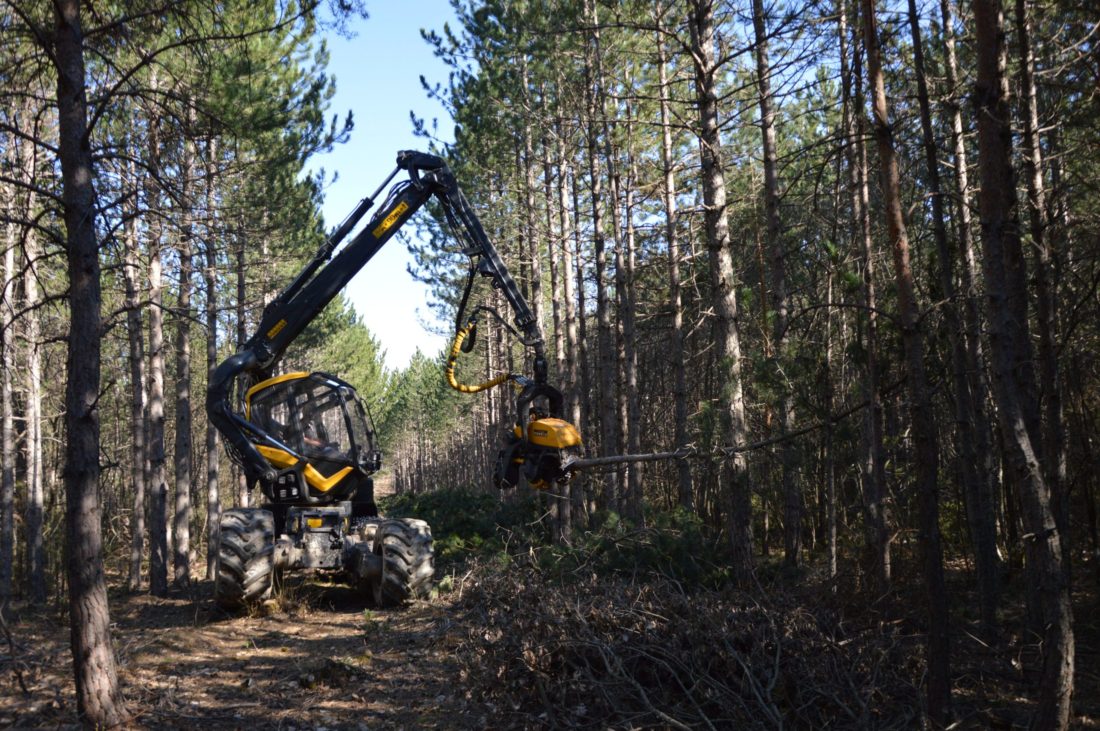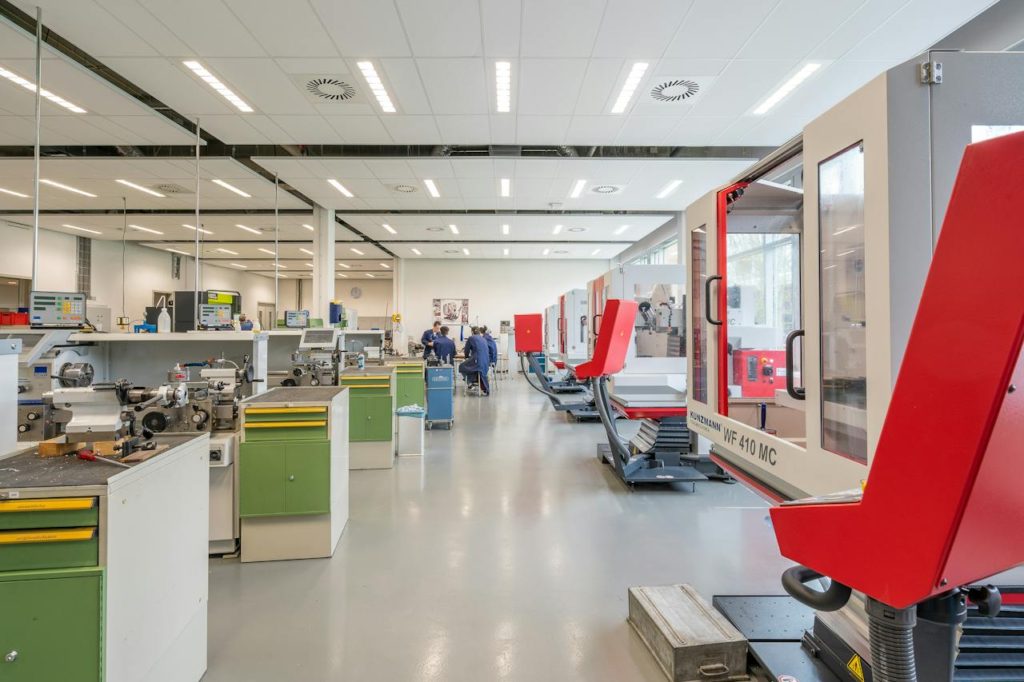In the realm of forestry machinery, durability, efficiency, and reliability are paramount. With the continuous evolution of technology, hot forged forestry machine parts have emerged as indispensable components, offering superior strength and performance. This comprehensive buyer’s guide aims to navigate the intricate landscape of purchasing these critical parts, with a particular focus on sourcing from China.
Hot Forging Explained:
Hot forging is a sophisticated manufacturing process that involves shaping metal through localized compressive forces at elevated temperatures, typically above the recrystallization point of the material. This method is renowned for its ability to improve the mechanical properties of metal components, including strength, toughness, and resistance to fatigue and wear. During hot forging, a billet or ingot of metal is heated to a malleable state and then subjected to controlled deformation using dies and presses.
The application of pressure at high temperatures refines the grain structure of the metal, aligning the grain boundaries and eliminating defects to enhance the part’s mechanical properties. Additionally, the plastic deformation induced by hot forging facilitates complex shapes and intricate geometries, allowing manufacturers to produce components with precise dimensions and tight tolerances.
Hot forged forestry machine parts exhibit exceptional durability and performance in challenging environments, making them indispensable for the reliability and longevity of forestry equipment. By harnessing the advantages of hot forging, manufacturers can produce high-quality components that meet the stringent requirements of the forestry industry.
4 Key Considerations For Hot Forged Forestry Parts Buyers:
When procuring hot forged forestry machine parts, several key considerations can guide buyers toward making informed decisions that align with their specific requirements and performance expectations.
Material Quality:
The foundational aspect of any hot forged component lies in its material composition. Buyers must prioritize parts crafted from high-quality steel alloys, such as carbon steel, alloy steel, or stainless steel. These alloys offer superior strength, durability, and resistance to wear and corrosion, essential traits for components operating in the demanding conditions of forestry machinery. It’s imperative to thoroughly assess the material specifications provided by suppliers to ensure compatibility with the intended application and environmental factors.
Precision Engineering:
Precision engineering is paramount in the production of hot forged forestry machine parts. Buyers should seek out manufacturers with a proven track record of precision forging techniques and adherence to tight tolerances. Precision forging ensures consistency in part dimensions and geometries, minimizing the risk of premature failure and optimizing the overall performance of the machinery. By partnering with reputable suppliers renowned for their precision engineering capabilities, buyers can have confidence in the reliability and longevity of the components.
Durability and Resistance:
Forestry machinery operates in harsh and abrasive environments, subjecting components to intense wear, impact, and corrosion. Therefore, buyers must prioritize the durability and resistance of hot forged parts. It’s essential to assess the component’s resistance to abrasion, impact, and corrosion, as well as its ability to withstand prolonged exposure to moisture, chemicals, and other environmental factors. Certifications or compliance with industry standards can serve as validation of the part’s durability and reliability, providing buyers with assurance of its suitability for their applications.
Customization Options:
Every forestry operation has unique requirements and equipment specifications, necessitating customized solutions for hot forged components. Buyers should prioritize suppliers capable of offering customization options to tailor parts to their specific needs. Customized forging solutions ensure optimal fit, functionality, and performance within the forestry machinery, enhancing overall efficiency and productivity. By collaborating closely with suppliers to define their requirements and performance criteria, buyers can ensure that the hot forged components meet or exceed their expectations.
Sourcing From China: 4 Benefits Buyers Enjoy
China has emerged as a global manufacturing powerhouse, offering a diverse array of hot forged forestry machine parts to meet the demands of various industries, including forestry. When considering sourcing from China, buyers can leverage the country’s manufacturing expertise, cost-effective production capabilities, and extensive supplier network. However, navigating the sourcing process requires careful consideration of several factors to ensure a successful procurement experience.
Supplier Evaluation:
The first step in sourcing Chinese hot forged forestry machine parts involves thorough supplier evaluation. Buyers should conduct comprehensive research to identify potential suppliers with a proven track record of quality, reliability, and adherence to industry standards. It’s essential to assess factors such as supplier reputation, experience, production capacity, and quality control measures. Requesting samples or prototypes can provide firsthand insight into the quality and compatibility of the parts with the intended machinery.
Quality Assurance:
Ensuring product quality is paramount when sourcing from China. Buyers should inquire about the supplier’s quality control processes, certifications, and adherence to international standards. It’s advisable to visit the supplier’s manufacturing facilities to assess production capabilities, quality management systems, and adherence to specified tolerances. Therefore, establishing clear quality requirements and expectations upfront can help mitigate risks and ensure that the sourced parts meet the desired standards of performance and durability.
Communication and Transparency:
Effective communication is critical throughout the sourcing process to address potential challenges and ensure alignment between buyers and suppliers. Buyers should establish clear communication channels with Chinese suppliers, taking into account language and cultural differences. Open dialogue regarding pricing, lead times, specifications, and shipping arrangements is essential for avoiding misunderstandings and facilitating a smooth procurement process. Transparency from both parties regarding expectations, timelines, and deliverables is key to building trust and fostering a collaborative partnership.
Intellectual Property Protection:
Protecting intellectual property rights is a crucial consideration when sourcing from China. Buyers should implement robust measures to safeguard their proprietary designs, technologies, and innovations. This may include utilizing legal agreements such as non-disclosure agreements (NDAs), manufacturing contracts, and intellectual property rights registrations. So, working closely with legal advisors familiar with Chinese intellectual property laws and regulations can help navigate potential risks and ensure that intellectual property rights are adequately protected throughout the sourcing process.
NB: By carefully evaluating suppliers, prioritizing quality assurance, maintaining transparent communication, and implementing intellectual property protection measures, buyers can successfully source hot forged forestry machine parts from China. Leveraging the country’s manufacturing capabilities while mitigating associated risks can lead to cost-effective procurement and enhanced performance of forestry equipment.
Conclusion:
Hot forged forestry machine parts play a pivotal role in ensuring the performance and reliability of forestry machinery in demanding environments. By adhering to key considerations and leveraging the capabilities of reputable suppliers, buyers can effectively navigate the procurement process and acquire high-quality parts that meet their specific requirements. When sourcing from China, diligent research, communication, and quality assurance measures are essential for a successful partnership and seamless integration of hot forged components into forestry equipment.


